
Medical surgical nursing classify pressure ulcers Medical surgical
Stages. Pressure ulcers are categorized by the National Pressure Ulcer Advisory Panel into four stages based on the degree of tissue involvement or the depth of the sore. The tissue layers can be broken down as: Epidermis (the outermost layer of skin) Dermis (the second layer of skin) Hypodermis (the lower layer of skin made up of fat and.
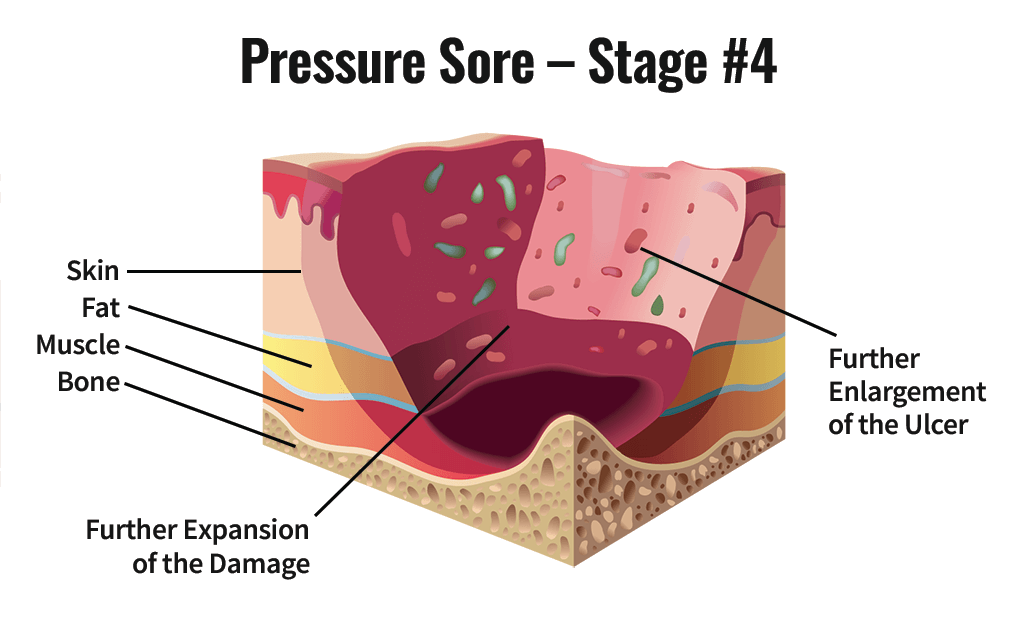
Skin & Pressure Sores after Spinal Cord Injury
Find Pressure Sores stock images in HD and millions of other royalty-free stock photos, 3D objects, illustrations and vectors in the Shutterstock collection. Thousands of new, high-quality pictures added every day.
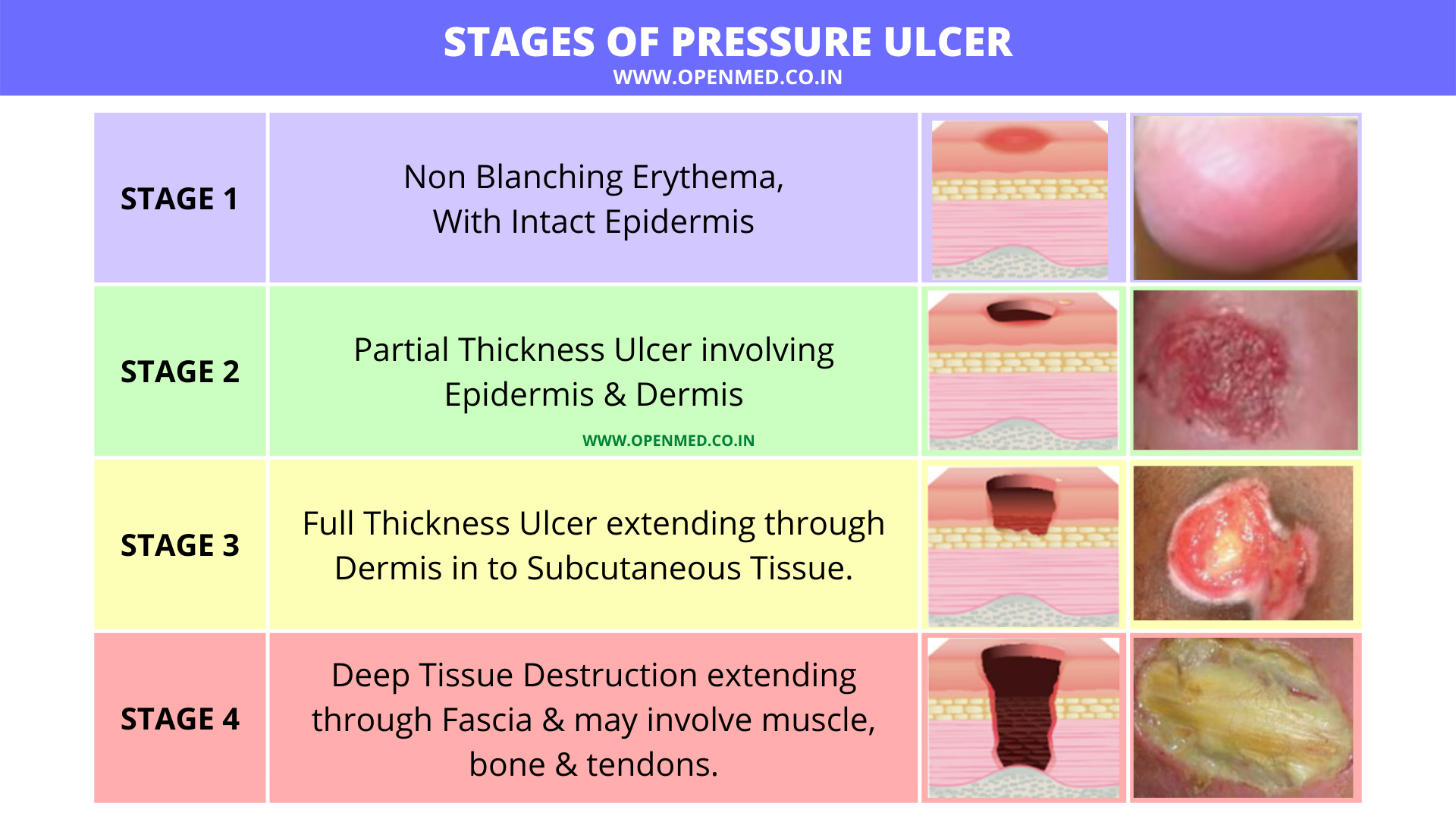
STAGES OF PRESSURE ULCER
Browse 460+ pressure sore stock photos and images available, or search for pressure wound or pressure points to find more great stock photos and pictures.
/NPUAP-Stage4-56a912715f9b58b7d0f7db31.jpg)
Pressure Ulcers After Surgery Risk Factors and Prevention
As a pressure sore progresses, symptoms may include: Blistering. Broken skin or an open wound. A crater-like appearance. Significant pain. Deep-tissue injury that can affect the muscles, tendons, and bones. Contact your healthcare provider immediately if you or a loved one has any signs of pressure sores.

Bed sores, pressure ulcer causes, stages, prevention & pressure ulcer
Causes. Prolonged pressure is essentially the main cause of a decubitus ulcer. Lying on a certain part of your body for long periods causes your skin to break down. The areas around the hips.

Stage 3 Wound / Pressure Ulcers Prevention Evaluation And Management
Warning signs of bedsores or pressure ulcers are: Unusual changes in skin color or texture. Swelling. Pus-like draining. An area of skin that feels cooler or warmer to the touch than other areas. Tender areas. Bedsores fall into one of several stages based on their depth, severity and other characteristics. The degree of skin and tissue damage.

Continuing education for pressure ulcer prevention Taking the pressure
There are two other types of pressure sores that don't fit into the stages. Sores covered in dead skin that is yellow, tan, green, or brown. The dead skin makes it hard to tell how deep the sore is. This type of sore is "unstageable." Pressure sores that develop in the tissue deep below the skin. This is called a deep tissue injury.
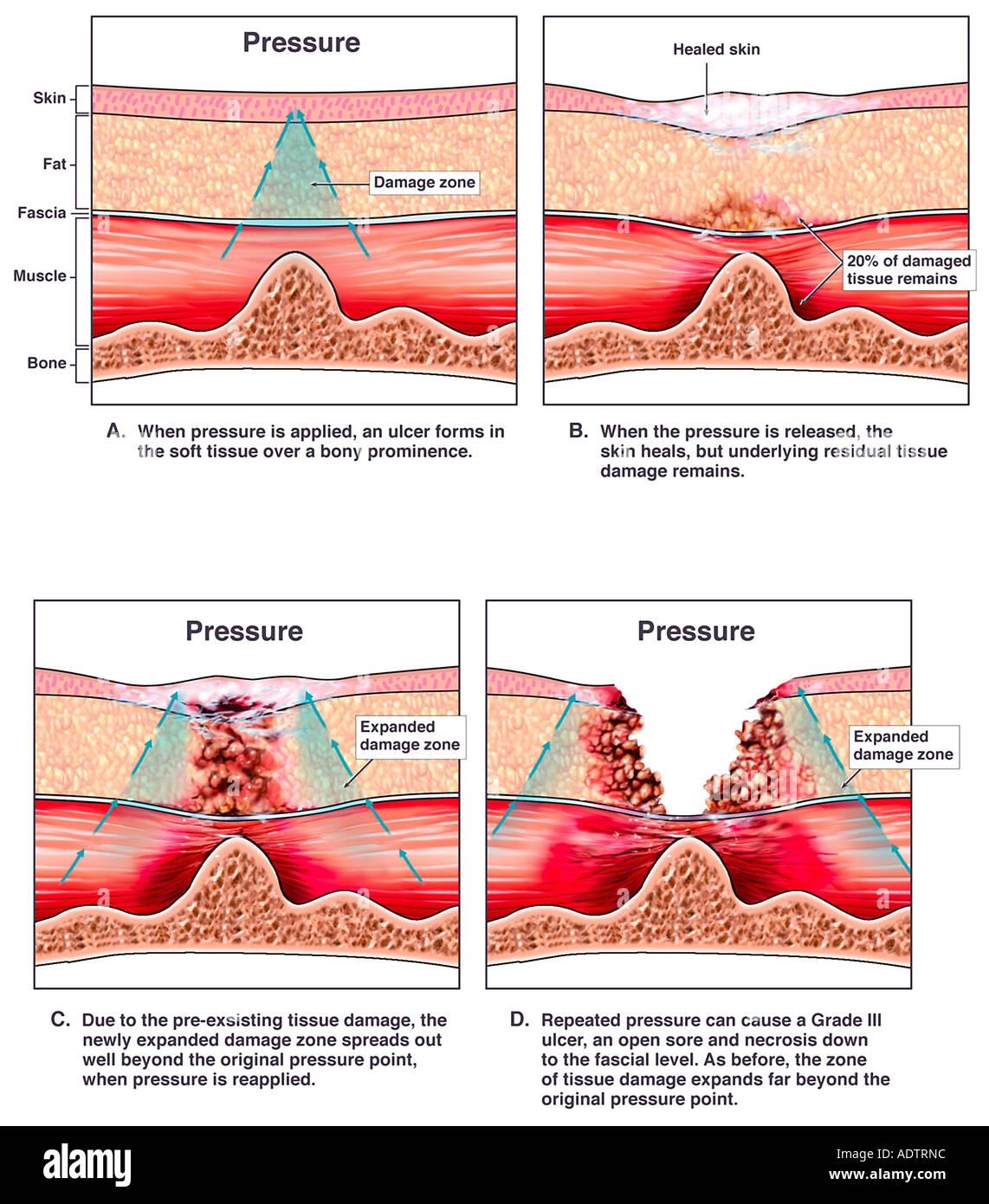
Development of Pressure Ulcers Stock Photo 7710107 Alamy
View pictures of pressure ulcers in the gallery below. These ulcers are skin and soft tissue injuries sustained from prolonged pressure. Pressure ulcers remain a clinical diagnosis. The patient's skin should be examined thoroughly from scalp to toe.

What Are Pressure Ulcers? MASS4D® Foot Orthotics
Browse 69 authentic pressure sores stock photos, high-res images, and pictures, or explore additional wound dressing or wound care stock images to find the right photo at the right size and resolution for your project. Browse Getty Images' premium collection of high-quality, authentic Pressure Sores stock photos, royalty-free images, and pictures.

Pressure Ulcers (Bed Sores) Health Life Media
Pressure sores often result from pressure combined with pulling on the skin, friction, and moisture, particularly over bony areas. The diagnosis is usually based on a physical examination. Treatment includes cleansing, reducing pressure on the affected area, special dressings, and sometimes antibiotics and/or surgery.
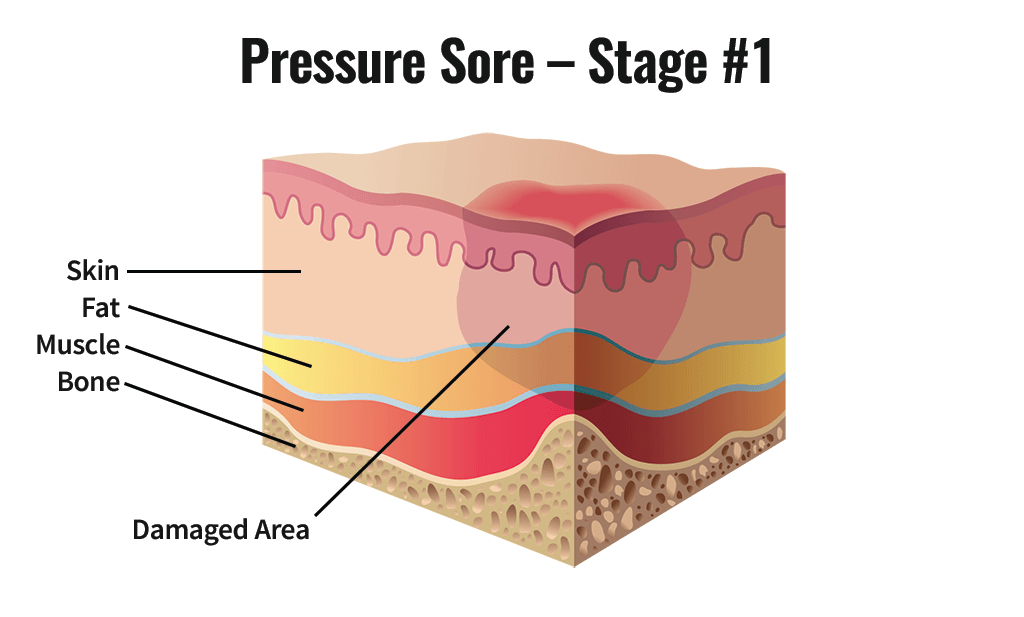
Skin & Pressure Sores after Spinal Cord Injury
PS3000 / Getty Images. Other symptoms of bed sores include a change in the temperature of the skin.. Another type of pressure sore that does not fit into one of the four stages is a deep tissue.

Pressure Sore, Stage 1 Stock Image C030/6109 Science Photo Library
Stages of bedsores or pressure ulcers include: Stage 1: Your skin looks red or pink, but there isn't an open wound. It may be hard for people with darker skin to see a color change. Your provider may refer to this stage as a pressure injury. Your skin may feel tender to the touch.
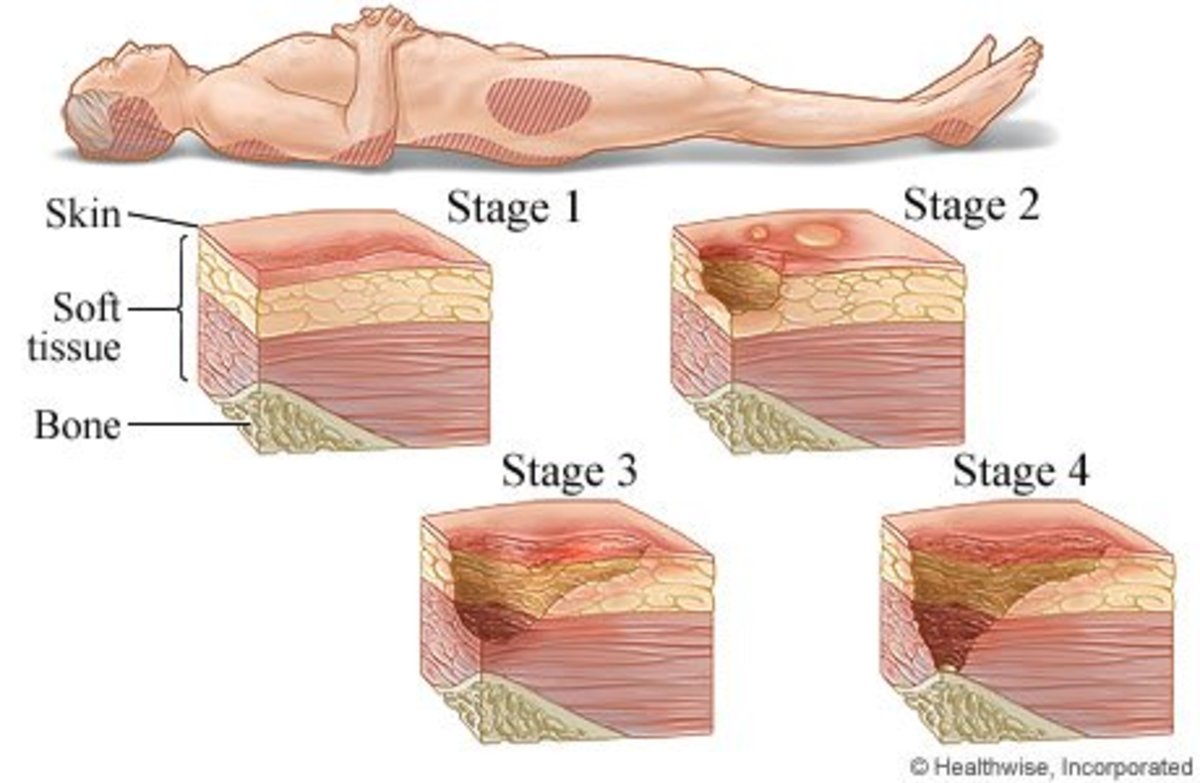
Pressure Ulcers Cause Owlcation
Pressure ulcers usually form on bony parts of the body, such as the heels, elbows, hips and tailbone. Symptoms of a pressure ulcer include: discoloured patches of skin that do not change colour when pressed - the patches are usually red on white skin, or purple or blue on black or brown skin. a patch of skin that feels warm, spongy or hard.

Staging of pressure ulcers. A, Stage I (1) pressure ulcers are areas of
Stage 1. Stage 2. Stage 3. Stage 4. 4 min read. You may know pressure sores by their more common name: bed sores. They happen when you lie or sit in one position too long and the weight of your.

Pressure sores hires stock photography and images Alamy
Pressure sores are areas of damaged skin caused by staying in one position for too long. They commonly form where your bones are close to your skin, such as your ankles, back, elbows, heels and hips. You are at risk if you are bedridden, use a wheelchair, or are unable to change your position. Pressure sores can cause serious infections, some.
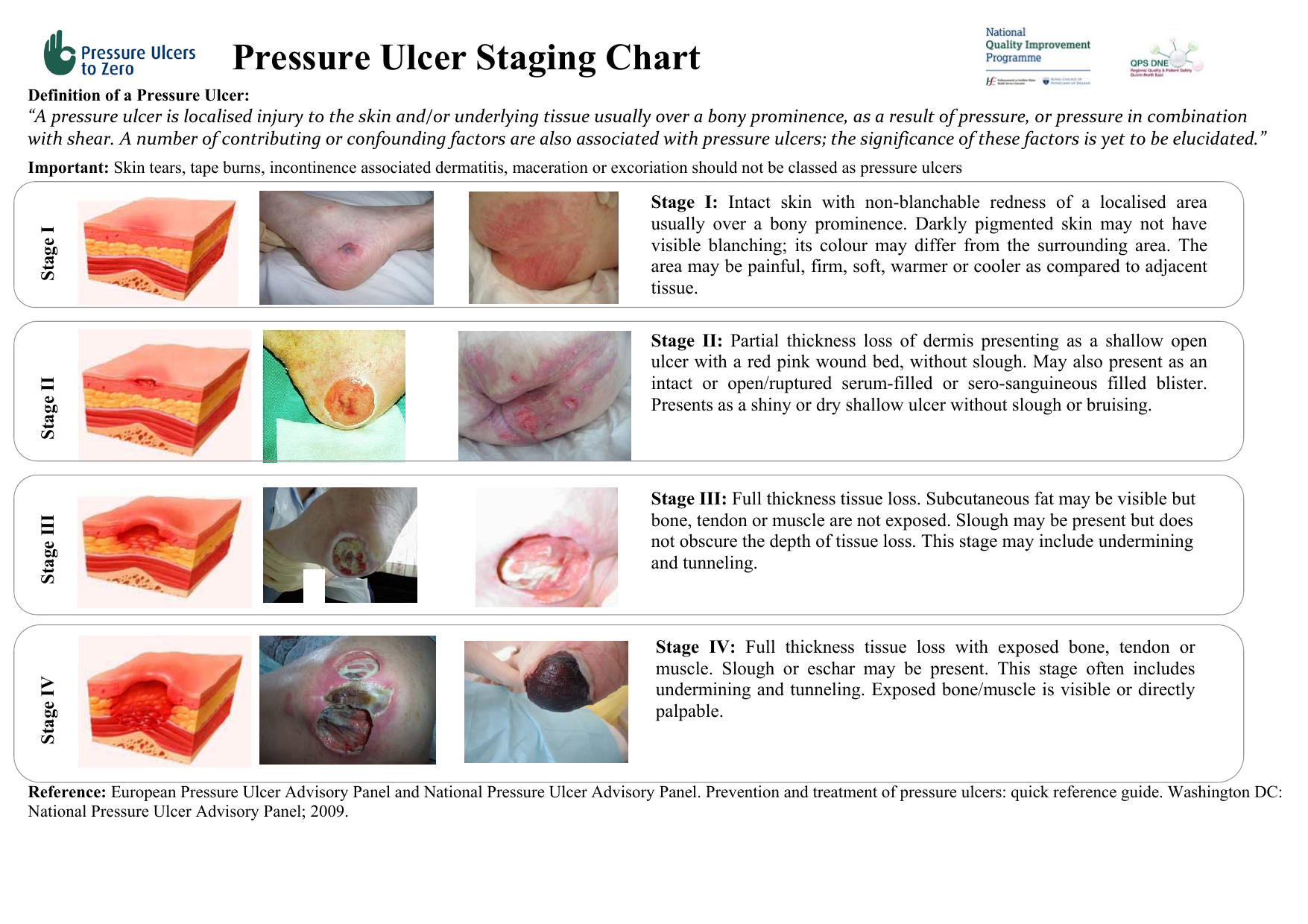
Common Definition of Pressure Ulcers
Pressure ulcers are also known as bedsores and decubitus ulcers. They range from closed to open wounds and are classified into a series of four stages based on how deep the wound is: . Stage 1.